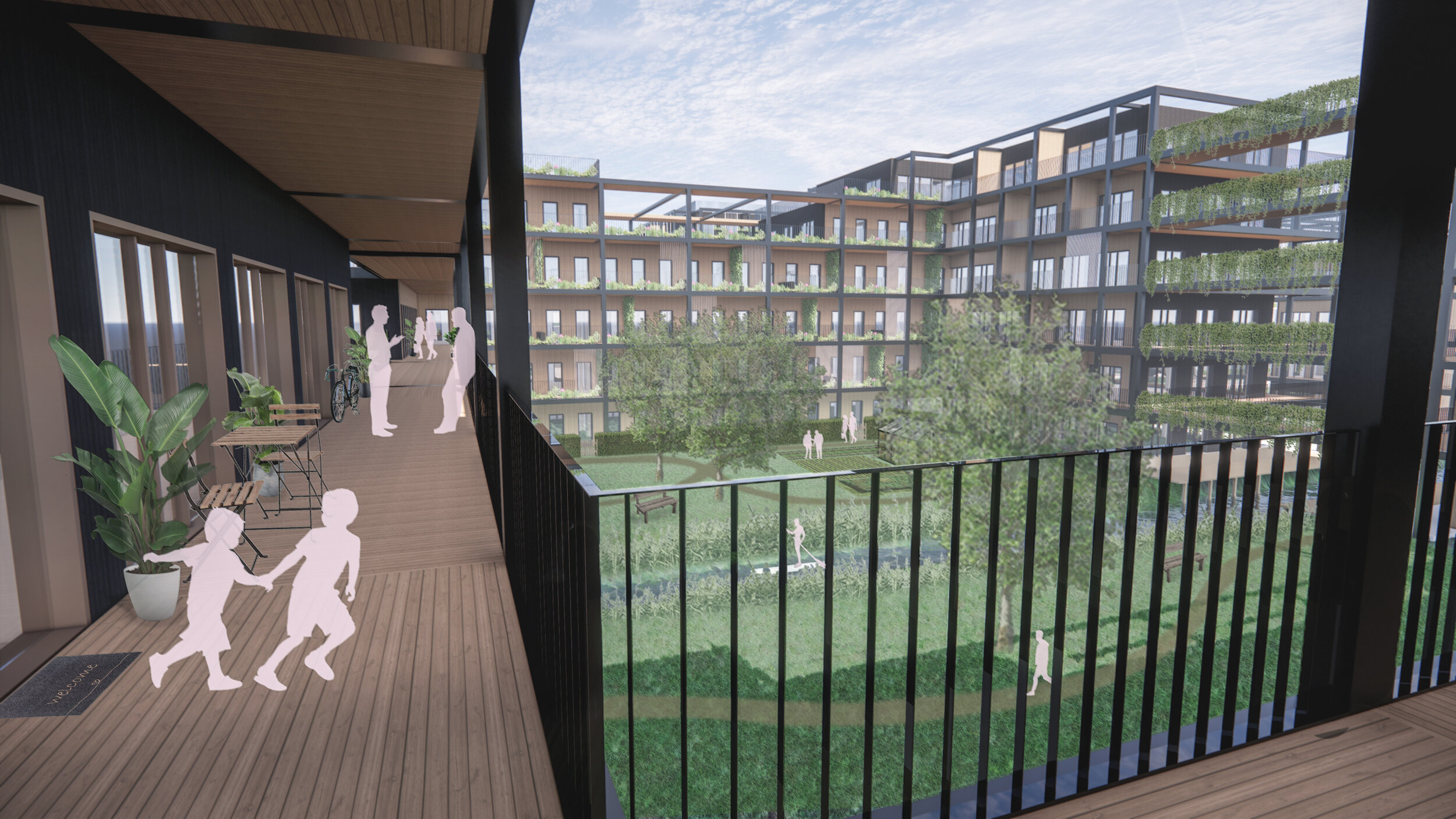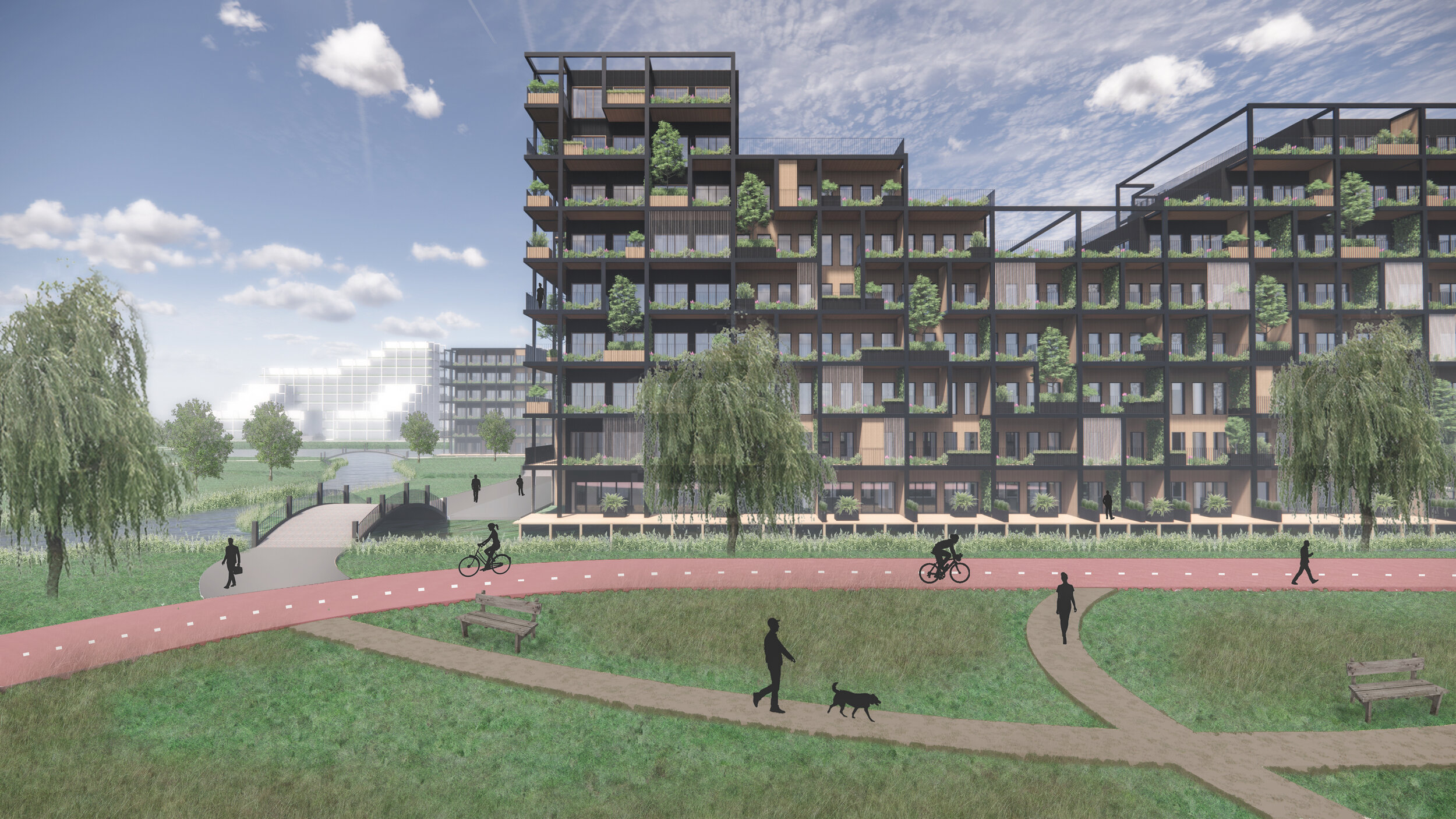THE OPEN SYSTEMS NEIGHBORHOOD
a flexible and circular neighborhood in Amsterdam Sloterdijk
In January 2021 Jan Vader graduated with his master thesis The Open Systems Neighborhood, a proposal for a future proof neighborhood, designed a circular open building system in order to answer the housing shortage and changing needs in society.
The Open Systems Neighborhood is a toolbox of demountable infill systems and components, designed to address a physical independency of building layers with a different lifespan. The toolbox can be used by different architects to design a building block in collaboration with the users. Future residents are able to create their own home with pre-designed assemblies and start a community based on shared values and interests.
In his thesis, Jan proposes a dense neighborhood consisting of a smart support (base building) that accommodates a circular infill. The support consists of several interior and exterior zones and has oversized dimensions to provide flexibility for adaptations in the future. Within the smart zoning areas of the support, infill building layers (skin, services, scenery, access and outdoor space) are mounted independently. That way they can be changed, replaced and refitted easily after the end of their functional or technical lifespan.
To put his concept to the test, Jan used the toolbox-concept to create an Open Systems Neighborhood in the Sloterdijk area in Amsterdam. He created a fabric of superblocks, built with the smart support. The toolbox for Sloterdijk consists of demountable infill systems and components. It is designed as one coherent ‘family’ of building elements. For example, it includes several façade types with identical structures, materials and detailing, but different window sizes and wood finishings. The elements can be prefabricated and assembled in many different configurations.
The toolbox comes with a manual for the architects that use it. The architects have to stick to the urban structure, the setting of the urban blocks and are restricted to use the elements provided by the toolbox. Each building block can be divided into clusters that have specific characteristics like greenery, privacy, the size of façade openings, appearance and apartments sizes. The support structure offers a lot of freedom of function for the users/residents who are encouraged to start a shared community, based on shared values and interests. They can decide to have a shared living room or workspace, an urban farming in the shared courtyard or a shared playground on the roof for their children.
Residents have the possibility to assembly their own home. The open support structure allows different sizes and configurations for each apartment. For the facade and private outdoor spaces residents can choose from pre-designed assemblies of components that are offered by the architect. Components like doors, windows, planters, railings, privacy-screens are elements described in the toolbox, for the architect to compose the pre-designed assemblies. The interior private space is up to the residents. The architect can offer examples of interior layout, but the resident is owner of this part of the design: a custom-made living space.
Read more about this thesis here.
The Open Systems Neighborhood is the master thesis by Jan Vader for Delft University of Technology, Faculty of Architecture and the Built Environment






